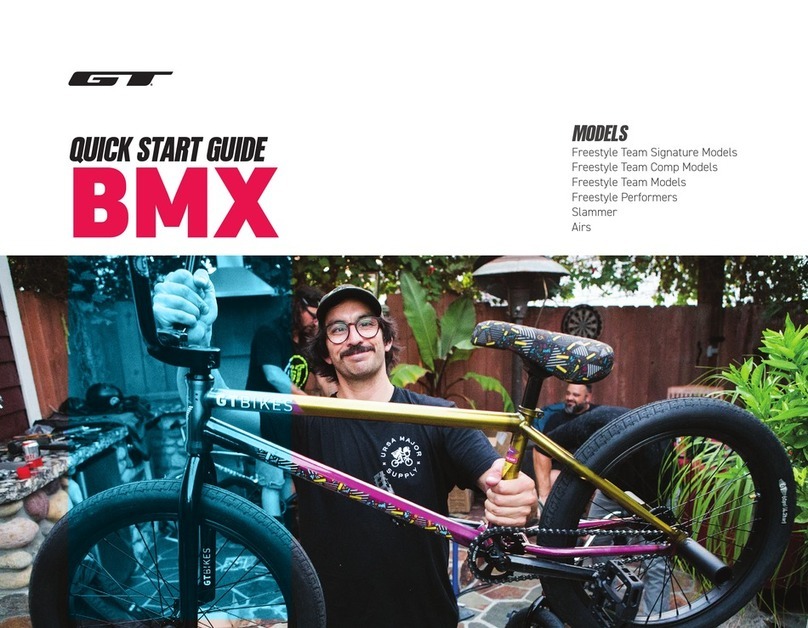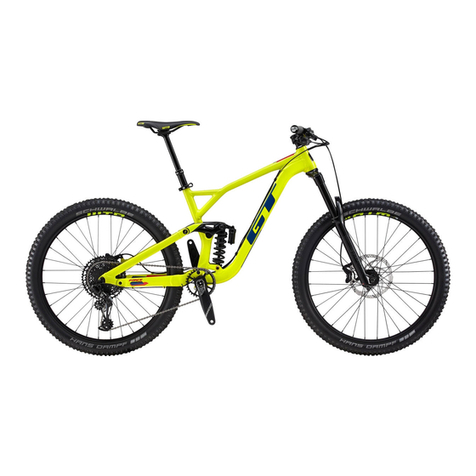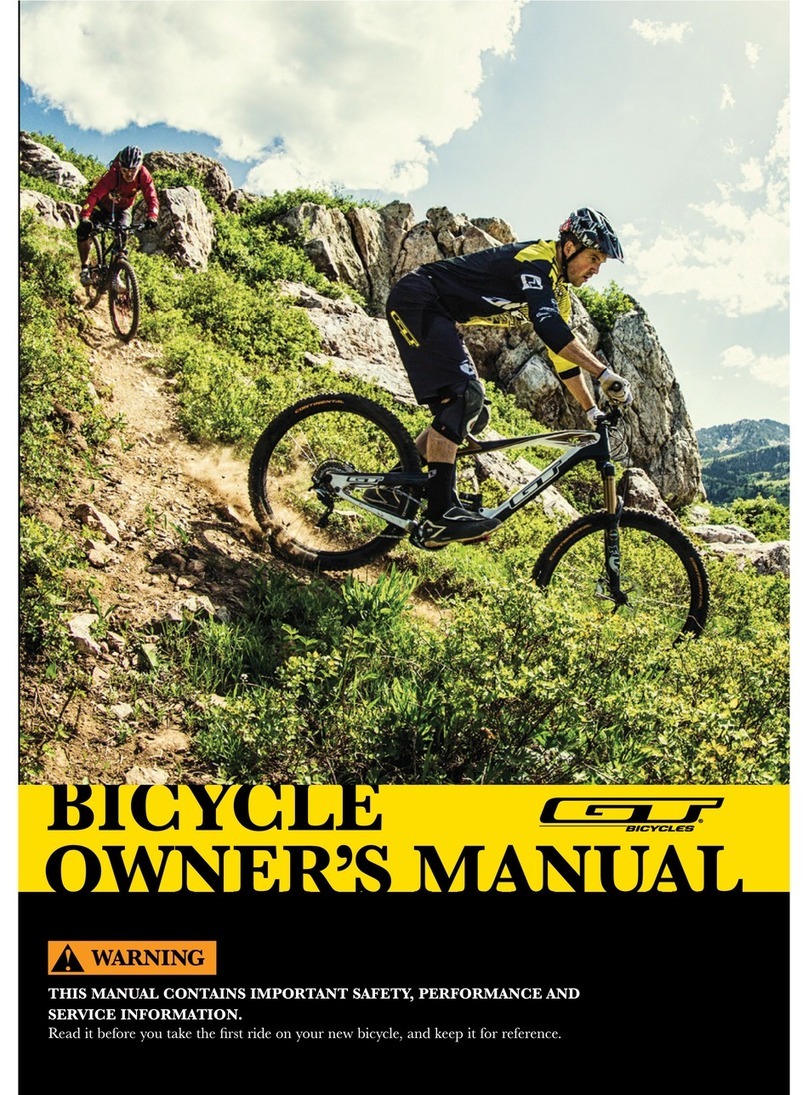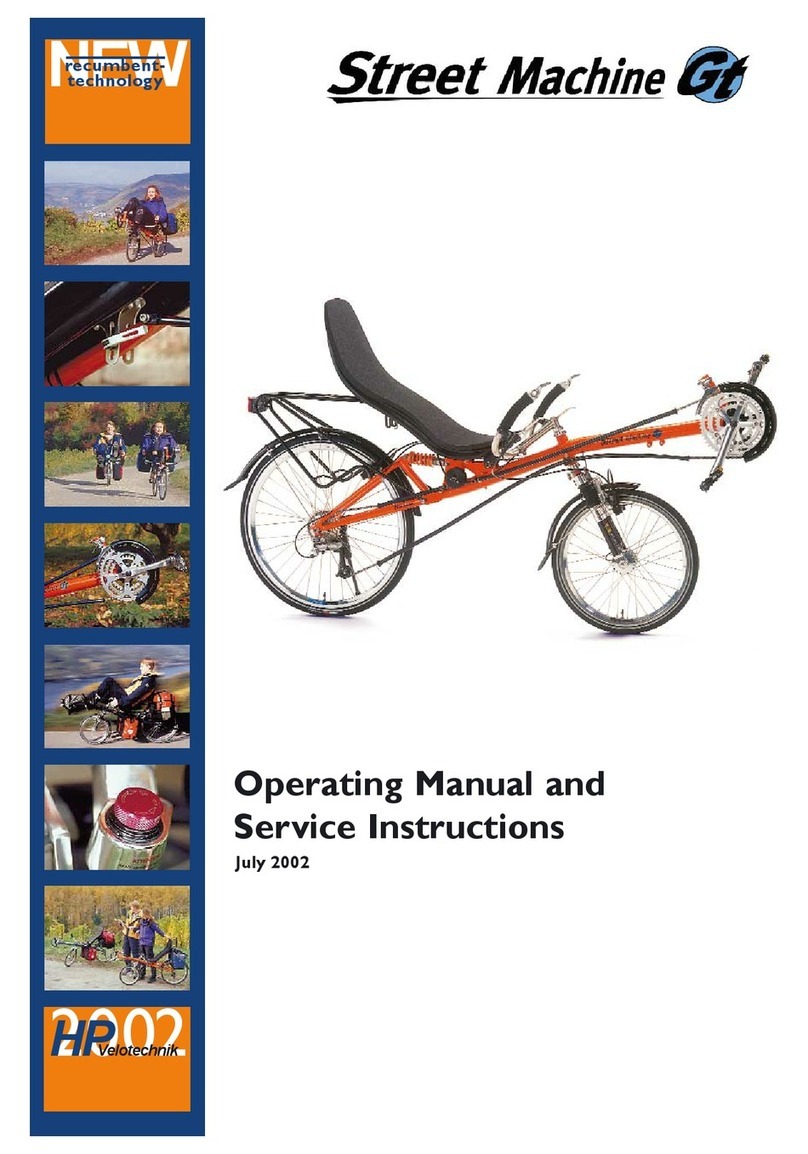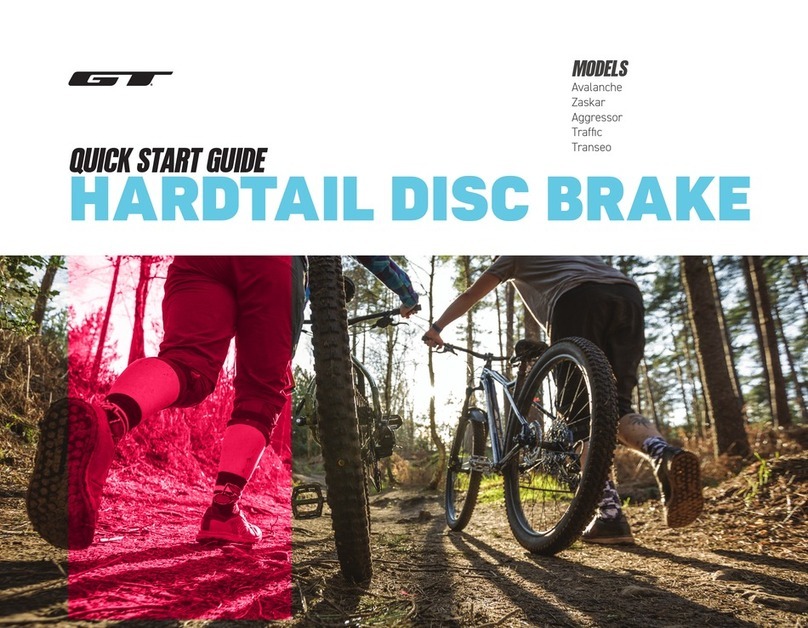
4
138692 Rev 0 (04/22)
GT Bicycle Owner’s Manual
About This
Owner’s Manual
This manual contains important information
affecting your safety and the proper use of
bicycles. It is a very important manual for every
bike we make. It is organized into three parts:
Part 1
Is a generic guide to the proper function and use
of bicycles. This generic information is used by
many bike companies. Most aspects of bicycles
are common or “generic.” PART I of this manual
is the 11th edition of the generic manual.
Some Content Published Under License from the
PeopleForBikes Coalition, LTD.
Part 2
Contains information specific to GT bicycles and
topics we feel you need to know and understand
about our bikes.
Part 3
Contains instructions on how to assemble a new
bike. Please read the Warning at the beginning of
this section. Please watch the assembly videos
noted in this Part.
A manual alone cannot teach you how to ride or
become a proficient mechanic, and a manual the
size of an encyclopedia could not cover every
combination of bicycle, rider and conditions.
Thus, as a reasonable person would expect, the
GT manuals and supplements focus on the
bicycle, not teaching you to ride.
GT Owner’s Supplements
GT Owner’s Manual Supplements are
“supplements” to this manual providing
important additional model specific safety,
maintenance, and technical information. GT
Owner’s Manual Supplements are not
replacements for this or any other manual for
your bike.
You can download Adobe Acrobat PDF versions
of any GT Owner’s Manual or Owner’s Manual
Supplements or Tech Notes from our website. Go
to: www.gtbicycles.com.
Authorized GT Retailer
Your local Authorized GT Retailer is your primary
contact for service and adjustment of your
bicycle, instruction in its use, and any warranty
questions.
As noted in Part 3, If you choose to assemble a
new bicycle yourself, to minimize risk, we
encourage you to consider bringing your bike to
a professional mechanic at a local bicycle
retailer. A professional mechanic can double
check the assembly and confirm your bike is
ready for many miles of trouble-free riding.
To find the GT retailer closest to you, call
1-800-THE-BIKE-USA, or use our website dealer
locator at www.gtbicycles.com.

